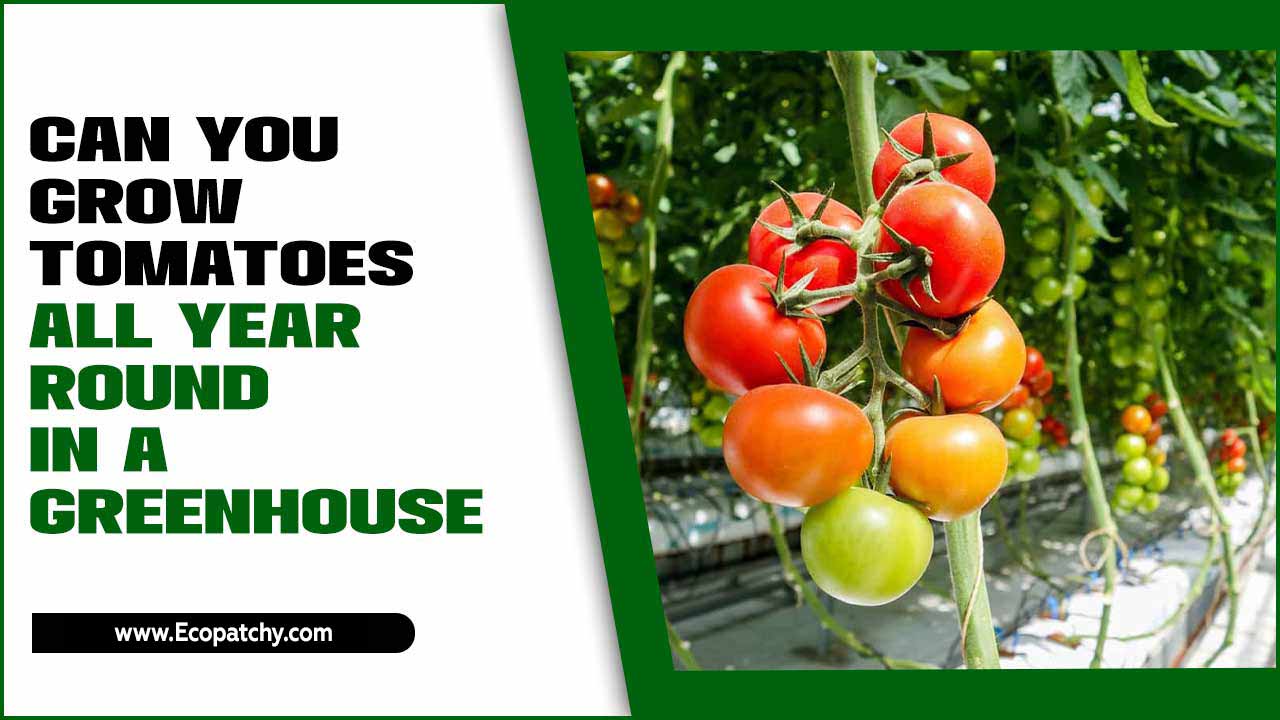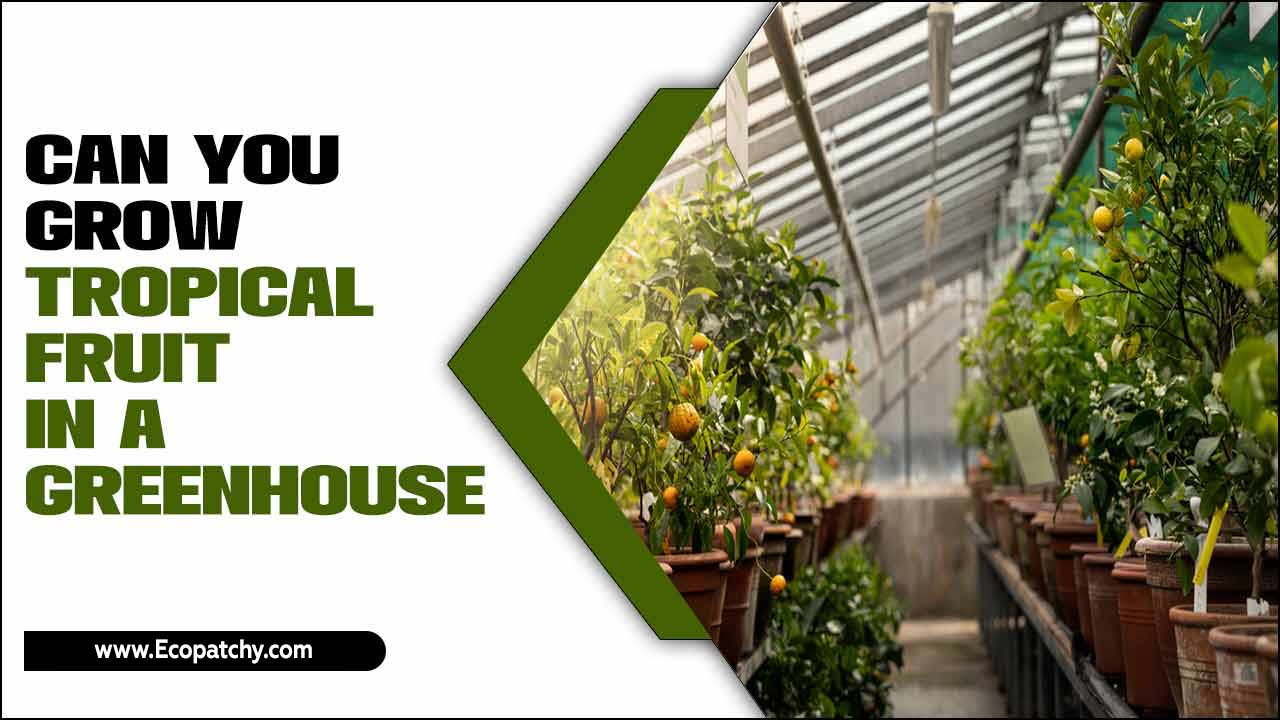Greenhouses are a popular method for growing produce, as they provide a controlled environment that can extend the growing season and protect plants from harsh weather conditions.
However, even with the optimal conditions that a greenhouse offers, some fruits and vegetables may still need a little extra help to reach their full potential. Tomatoes, in particular, are notorious for their slow ripening process, often leaving greenhouse growers frustrated with under-ripe fruits.
Here, we will walk you through the process of understanding the ripening process of tomatoes and how ethylene plays a role in it. You’ll find seven easy ways how to ripen tomatoes in a greenhouse. We’ll also discuss common mistakes to avoid when trying to ripen tomatoes in a greenhouse, tips for maximizing flavour, and harvesting techniques for ripe tomatoes.
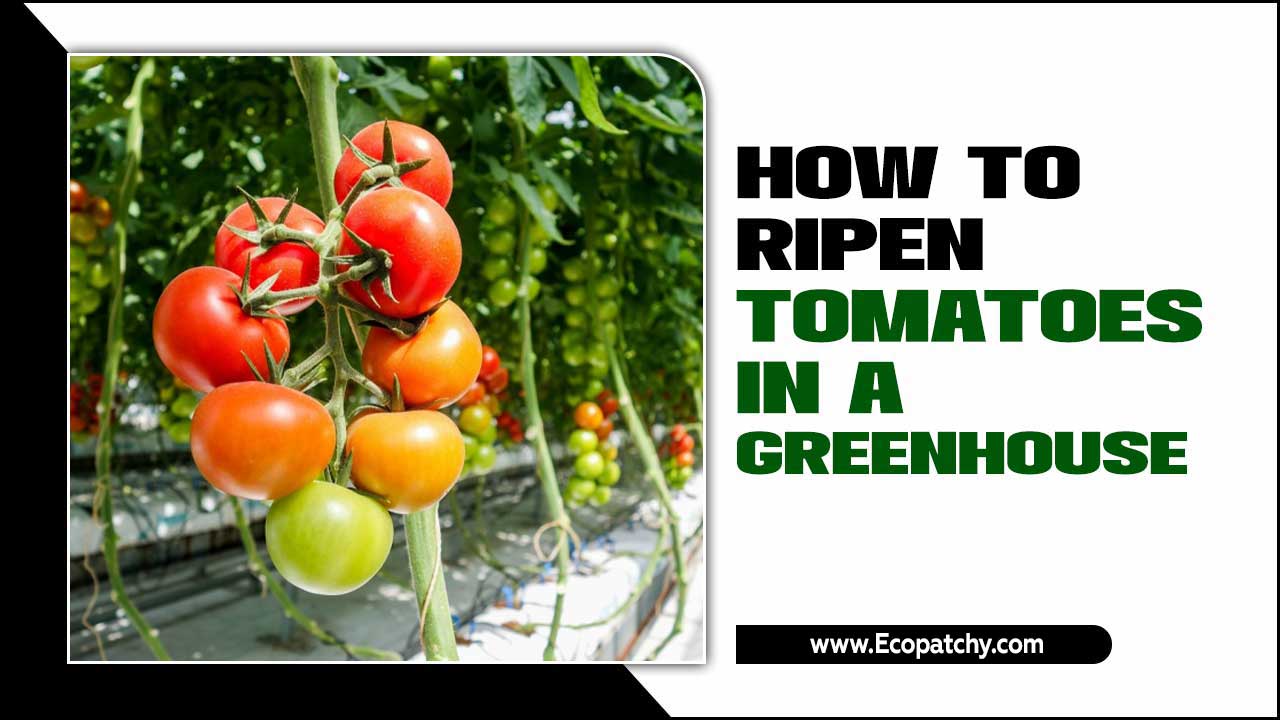
The Role Of Ethylene In Tomato Ripening
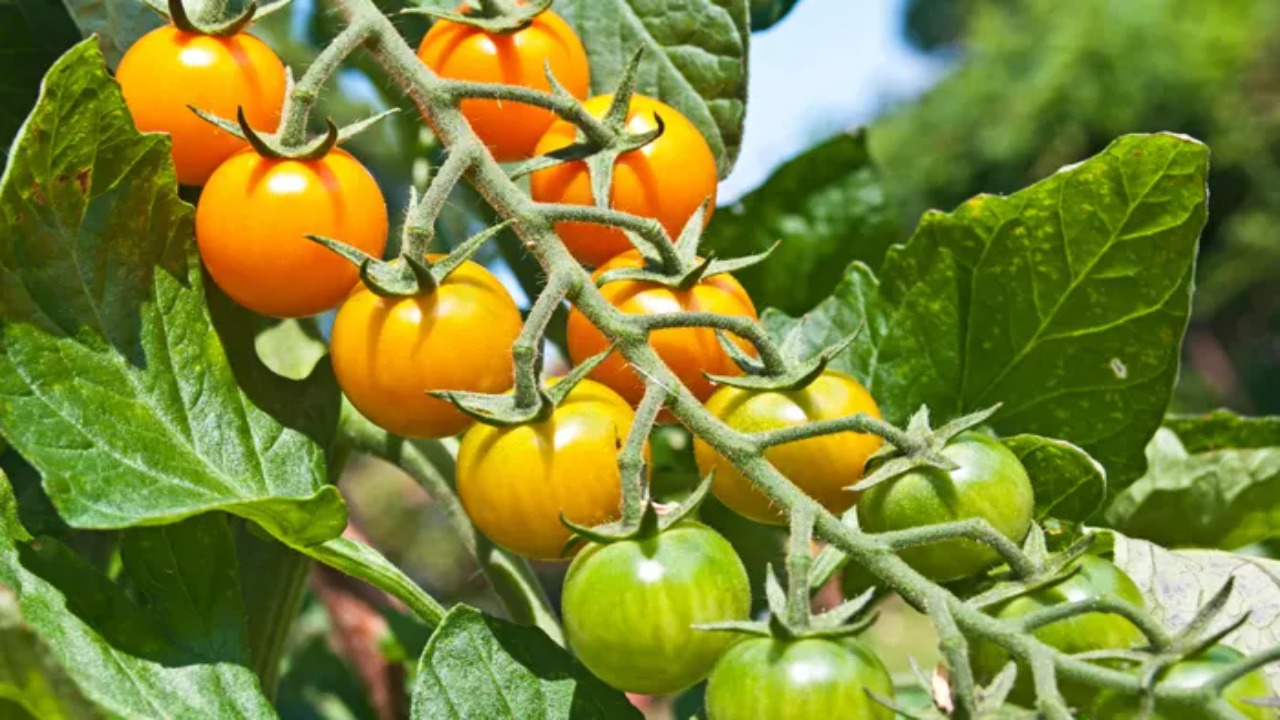
Ethylene gas, a natural plant hormone, is crucial in tomato ripening. As tomatoes ripen, they release ethylene gas, which promotes the ripening process. To accelerate the ripening of green tomatoes, exposing them to ethylene gas is an effective method.
Another technique is placing ripe tomatoes in a paper bag with unripe ones, as the ethylene gas emitted by the ripe tomatoes speeds up the ripening of the green ones. This gas can also be utilized in a greenhouse setting to ripen tomatoes.
7 Ways How To Ripen Tomatoes In A Greenhouse

Tomato ripening is influenced by ethylene gas, temperature, and humidity. The ripening process involves the breakdown of green pigments. Tomatoes ripen from the blossom end to the stem end. Proper air circulation and ventilation are important for ripening tomatoes.
Room temperature is ideal for the ripening process. Ripening tomatoes in a greenhouse can be a bit of a challenge, but with the right techniques, you can enjoy ripe, juicy tomatoes all season long. Here are seven ways how to ripen tomatoes in a greenhouse:
1.Use Ethylene Gas
To ripen green tomatoes in a greenhouse, you can use ethylene gas. One method is to place the green tomatoes in a bag with ripening fruit like bananas. The ethylene gas emitted by the ripening fruit accelerates the ripening process of the tomatoes, turning them from green to ripe.
However, it’s important to ensure proper ventilation and air circulation when using ethylene gas for ripening. Additionally, consider the ripeness of the tomatoes and the desired ripening speed when using ethylene gas.
2.Prune And Trim
Regularly pruning tomato plants promotes air circulation and prevents the spread of diseases. It’s important to remove yellow or dead leaves to redirect the plant’s energy towards fruit ripening. Trimming excess foliage allows sunlight to reach the tomatoes, aiding in the ripening process.
By controlling the size of the plant through pruning, it becomes easier to manage and harvest tomatoes. Proper pruning techniques can also improve fruit quality and yield. Incorporating these practices will help you achieve full-sized, perfectly ripe tomatoes in your greenhouse.
3.Increase Temperature
Maintaining greenhouse temperatures between 65-75 degrees Fahrenheit is crucial for optimal tomato ripening. To protect tomatoes from cooler weather, use greenhouse heaters or insulation, as low temperatures can slow the ripening process. Increasing the temperature helps speed up ripening, resulting in perfectly ripe and flavorful tomatoes.
Covering tomato plants with polytunnel or greenhouse plastic during cooler nights helps retain heat. Regularly monitor the greenhouse temperature to ensure it stays within the ideal range. These methods ensure mature fruit development and individual tomatoes with the best flavour.
4.Ventilation And Humidity Control
Proper ventilation is essential for ripening tomatoes in a greenhouse, as it helps prevent mold and rot. One of the best methods is to use fans or ventilation systems that effectively circulate air, reducing moisture and humidity levels.
Opening greenhouse windows or doors during the day can provide much-needed air circulation. Additionally, installing ventilation systems like exhaust fans can help remove excess humidity. To ensure optimal conditions, it’s recommended to monitor humidity levels using a hygrometer and aim for around 50-70% humidity.
5.Water Management
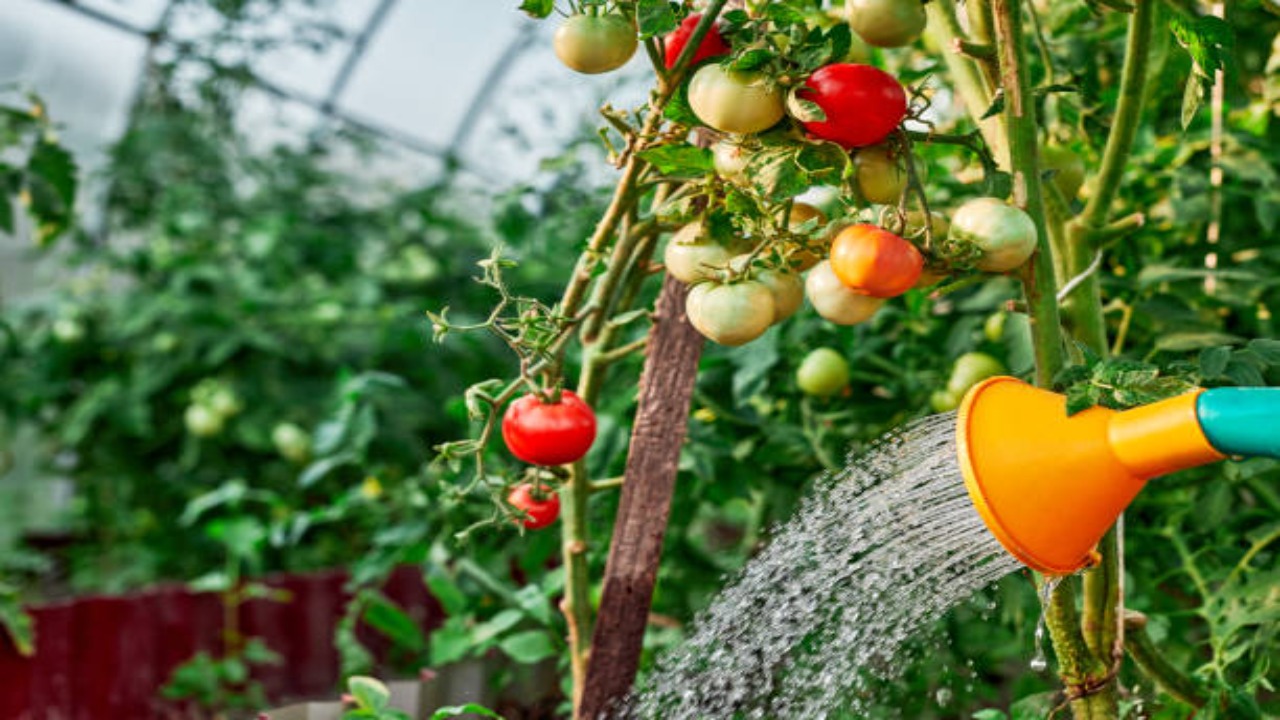
Watering tomato plants in a greenhouse requires consistent watering to ensure the soil is evenly moist without becoming waterlogged. Overwatering should be avoided as it can lead to fruit splitting or rotting. It’s best to water the base of the plant, avoiding the leaves, to reduce the risk of fungal diseases.
Using drip irrigation systems or watering cans to deliver water directly to the plant’s roots is recommended. The watering frequency should be adjusted based on the greenhouse temperature, humidity, and the size of the tomato plants.
6.Reflective Surfaces
To enhance the ripening process of tomatoes in a greenhouse, consider using reflective surfaces strategically. Place aluminum foil or other reflective materials near the tomato plants to redirect sunlight onto the fruits, increasing the temperature and accelerating ripening.
You can line the walls, ceiling, or area under the tomato plants with reflective material. However, be cautious not to create excessive heat that could damage the plants. Regularly monitor the temperature around the tomatoes when utilizing reflective surfaces to ensure optimal ripening conditions.
7.Harvest Time
When the time comes to harvest your tomatoes in a greenhouse, it’s important to monitor their colour. Pick them when they are green, turning, or perfectly ripe. To ensure the plant remains healthy, gently twist the tomatoes off the vine, keeping the truss intact.
Instead of pulling entire trusses at once, harvest each tomato individually to avoid damaging the entire plant. Handle the ripe tomatoes with care to prevent bruising or rot. After harvesting, place the tomatoes in single layers for proper air circulation.
The Correct Watering Approach For Ripening Tomatoes

Regarding ripening tomatoes in a greenhouse, the correct watering approach is crucial. Tomatoes need consistent and adequate moisture to ripen properly, but overwatering can lead to issues such as root rot or splitting of the fruit. The key is maintaining a balance by watering the plants deeply but infrequently.
This allows the soil to dry out slightly between waterings, which encourages the roots to grow deeper and strengthens the plant overall. It’s also important to water at the base of the plants rather than overhead, as wet foliage can increase the risk of disease. Following this watering approach, you can help ensure that your greenhouse-grown tomatoes ripen beautifully and taste delicious.
Factors That Affect Tomato Ripening In A Greenhouse

When ripening tomatoes in a greenhouse, several factors can affect the process. Considering these factors and implementing proper techniques, you can successfully ripen tomatoes in your greenhouse and enjoy delicious, homegrown produce. Here are some tips to help you achieve optimal tomato ripening:
- Temperature: Tomatoes require warm temperatures to ripen properly. Aim for a temperature range of 70-75°F during the day and 60-65°F at night.
- Humidity: High humidity levels can slow down the ripening process. Keep humidity levels around 50-70% to promote efficient ripening.
- Air circulation: Good air circulation is crucial for even ripening. Use fans or vents to ensure proper airflow within the greenhouse.
- Light Exposure: Tomatoes need ample sunlight to ripen. Make sure they receive at least 8 hours of direct sunlight each day.
- Ethylene Gas: Ethylene gas is a natural plant hormone that promotes fruit ripening. To accelerate tomato ripening, consider using ethylene-producing fruits like bananas or apples in the greenhouse.
Choosing The Right Tomato Varieties For Greenhouse Cultivation
Choosing the right tomato varieties for greenhouse cultivation is essential for successfully ripening tomatoes. When selecting tomato varieties, consider factors such as the average temperature and humidity levels in your greenhouse, as well as the amount of available sunlight.
Some tomato varieties are better suited for greenhouse cultivation than others, so it’s important to do your research and choose varieties that have a shorter maturation period and are more tolerant of the greenhouse environment. Popular greenhouse tomato varieties include ‘Sweet 100’, ‘Sun Gold’, and ‘Beefsteak’. By selecting the right tomato varieties, you can maximize your chances of successfully ripening tomatoes in your greenhouse.
Common Mistakes To Avoid When Trying To Ripen Tomatoes In A Greenhouse
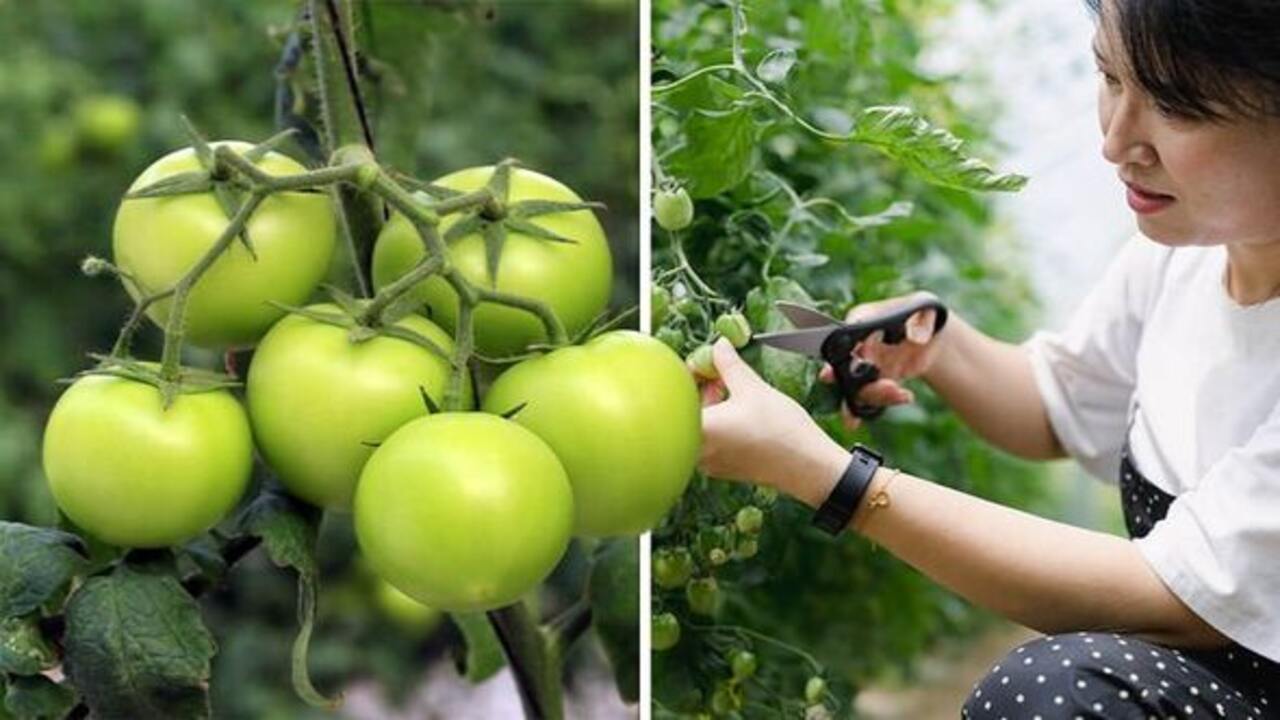
When trying to ripen tomatoes in a greenhouse, there are some common mistakes that you should avoid to ensure successful ripening. By following these tips and avoiding common mistakes, you’ll be well on your way to successfully ripening tomatoes in your greenhouse. Here are some tips to keep in mind:
- Avoid Overwatering: While it’s important to provide adequate moisture for your tomato plants, overwatering can lead to root rot and hinder the ripening process. Ensure to water your plants consistently, but allow the soil to dry out slightly between watering.
- Provide Proper Ventilation: Good air circulation is crucial for ripening tomatoes. Without enough airflow, the fruits may develop mold or rot before they have a chance to ripen. Keep greenhouse vents open or use fans to promote air movement.
- Monitor Temperature: Tomatoes need warmth to ripen properly, but excessive heat can slow the ripening process. Aim for temperatures between 70-75°F (21-24°C) during the day and slightly cooler at night.
- Remove Excess Foliage: Dense foliage can block sunlight from reaching the tomatoes, inhibiting their ripening ability. Prune off any unnecessary leaves or branches to allow more light penetration.
- Avoid Overcrowding: Give your tomato plants enough space so that each fruit has room to grow and receive ample sunlight. Overcrowding can lead to poor air circulation and uneven ripening.
Tips For Caring For Your Tomato Plants During The Ripening Process
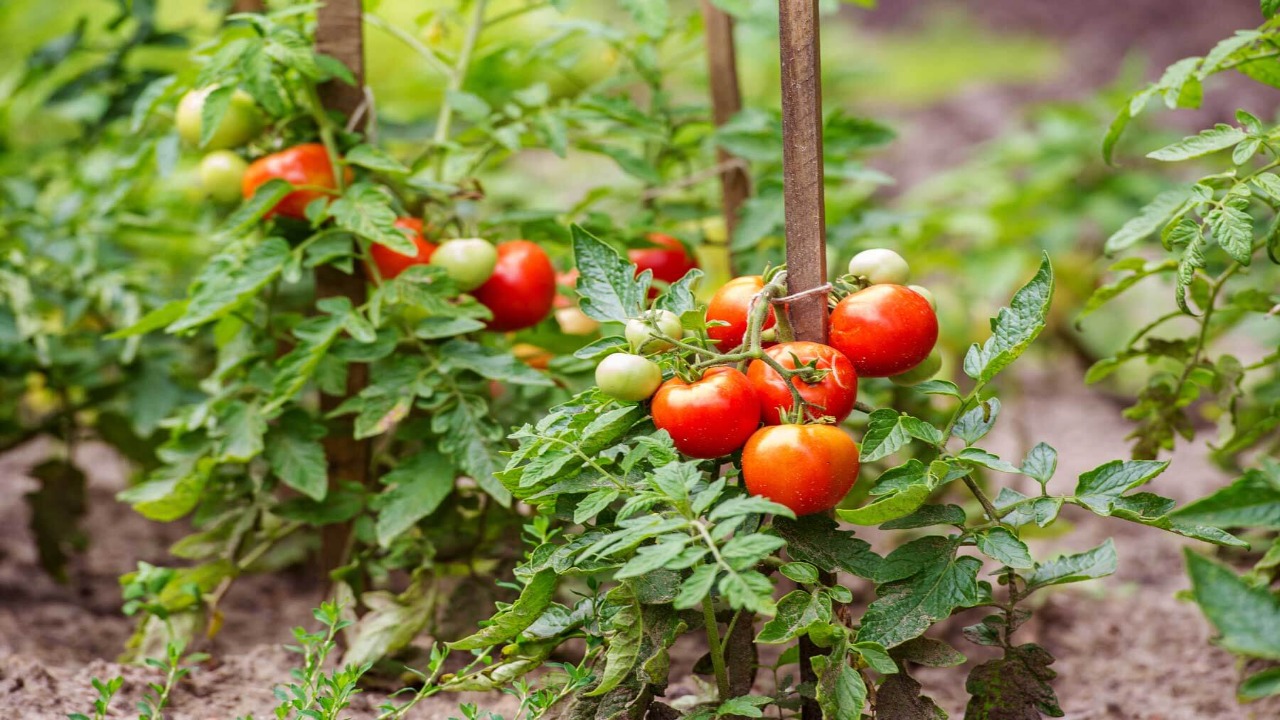
Caring for your tomato plants during the ripening process is crucial to ensure a successful harvest. Following these tips, you can maximize the chances of successfully ripening tomatoes in your greenhouse and enjoy delicious homegrown produce. Here are some tips to help you ripen tomatoes in a greenhouse:
- Provide Adequate Sunlight: Tomatoes need plenty of sunlight to ripen properly. Ensure your greenhouse is positioned in a location that receives full sun exposure throughout the day.
- Maintain Proper Temperature: Tomatoes require warm temperatures to ripen. Keep the greenhouse temperature between 65-85°F (18-29°C) during the day and above 55°F (13°C) at night.
- Monitor Humidity Levels: High humidity can delay the ripening process. Use fans or ventilation systems to maintain air circulation and prevent excessive moisture buildup.
- Prune And Support Plants: Pruning your tomato plants and providing support, such as cages or stakes, can help improve air circulation and prevent overcrowding, which can hinder ripening.
- Water Consistently: Tomatoes need consistent watering to thrive. Keep the soil moist, but avoid overwatering, which can lead to rotting fruit—water deeply once or twice a week, depending on weather conditions.
Harvesting Techniques For Ripe Tomatoes In The Greenhouse

Regarding ripening tomatoes in a greenhouse, several techniques can help ensure a successful harvest. By implementing these techniques, you can maximize your tomato harvest and enjoy flavorful, ripe tomatoes straight from your greenhouse. Here are some tips to consider:
- Optimal Temperature: Tomatoes ripen best at temperatures between 65-75°F (18-24°C). Maintaining a consistent temperature within this range promotes even and thorough ripening.
- Ethylene Exposure: Ethylene is a natural plant hormone stimulating fruit ripening. To speed up the ripening process, you can place ripe fruits like bananas or apples near the green tomatoes. The ethylene gas they emit will help accelerate the colour change and softening of the tomatoes.
- Proper Pruning: Pruning your tomato plants can redirect energy towards fruit production and ripening. Remove any excessive foliage or side shoots obstructing airflow and sunlight penetration to the fruits.
- Adequate Watering: Consistent moisture levels are essential for healthy tomato growth and ripening. Avoid overwatering, as excessive water can lead to cracking or splitting of the fruits. Aim for deep, infrequent watering to maintain proper hydration without saturating the soil.
- Regular Inspection: Check your tomatoes regularly for signs of ripeness. Look for vibrant colours, such as red, orange, or yellow (depending on the variety), and gentle firmness when gently squeezed.
Tips For Maximizing Tomato Flavor And Quality During The Ripening Process
To maximize the flavour and quality of tomatoes during the ripening process in a greenhouse. By following these tips, you can ensure that your greenhouse-grown tomatoes reach their full flavour potential and provide a delicious addition to your meals. Here are some helpful tips:
- Harvest tomatoes when they have reached their mature green stage. This is when they have started to change colour but are still firm.
- Store harvested tomatoes at room temperature in a single layer to allow for even ripening. Avoid stacking or crowding the tomatoes, as this can lead to bruising and spoilage.
- Place a ripe banana or apple near the tomatoes to speed up the ripening process. These fruits release ethylene gas, which helps stimulate ripening.
- Check the tomatoes regularly for signs of ripeness, such as a slight softening and deepening of colour. Once they have fully ripened, transfer them to the refrigerator to slow down further ripening and extend their shelf life.
- Avoid exposing tomatoes to direct sunlight or extreme temperatures, which can cause them to overripen or develop off flavours.
Conclusion
Ripening tomatoes in a greenhouse requires careful attention to temperature, light, and ethylene gas. By controlling these factors and following the right techniques, you can ensure a successful ripening process. Remember to prune and trim your plants, increase temperatures, and manage ventilation and humidity.
Proper water management and reflective surfaces can also aid in ripening. Additionally, choose the right tomato varieties for greenhouse cultivation and avoid common mistakes that may hinder the ripening process.
Lastly, take care of your tomato plants during the ripening process and use proper harvesting techniques to maximize flavor and quality. With these tips, you can enjoy delicious, homegrown tomatoes from your greenhouse. So, it is essential to know how to ripen tomatoes in a greenhouse.
Frequently Asked Questions
1.Can Too Much Water Delay Tomato Ripening In A Greenhouse?
Ans: Overwatering in a greenhouse can indeed delay tomato ripening. When the roots are waterlogged, nutrient uptake is reduced, affecting the ripening process. It’s crucial to maintain proper soil moisture levels and monitor them regularly to ensure optimal growth and ripening. Remember to adjust the watering frequency accordingly.
2.Why Are My Tomatoes Not Ripening In The Greenhouse?
Ans: If your tomatoes are not ripening in the greenhouse, it could be due to a lack of sunlight or the wrong temperature. The ideal temperature for tomato ripening is between 18-24°C. Additionally, excessive watering can delay ripening, so be mindful of the amount of water you use. If all else fails, use ethylene gas to speed up the ripening process.
3.Can You Put Bananas In A Greenhouse To Ripen Tomatoes?
Ans: Yes, placing bananas in a greenhouse can help speed up the ripening process of tomatoes. Bananas release ethylene gas, which promotes the ripening of fruits. Place them next to the tomatoes or combine them in a paper bag to enhance the ripening process. Just be cautious not to overripe the tomatoes, as they may spoil quickly.
4.How Do You Encourage Tomatoes To Ripen?
Ans: To encourage tomatoes to ripen, ensure they receive ample sunlight by removing shaded leaves or branches. Shake the tomato plants lightly to promote pollination and fruit development. Reduce watering as the tomatoes ripen, allowing the plant to prioritize fruit production. Additionally, placing ripe bananas or apples nearby can speed up ripening due to the release of ethylene gas.
5.Can You Speed Up The Process Of Ripening Tomatoes In A Greenhouse?
Ans: Yes, it is possible to speed up the ripening process of tomatoes in a greenhouse. By increasing the temperature and humidity levels, using ethylene gas, and harvesting partially ripe tomatoes, you can accelerate the ripening process. This allows for quicker access to delicious homegrown tomatoes.


